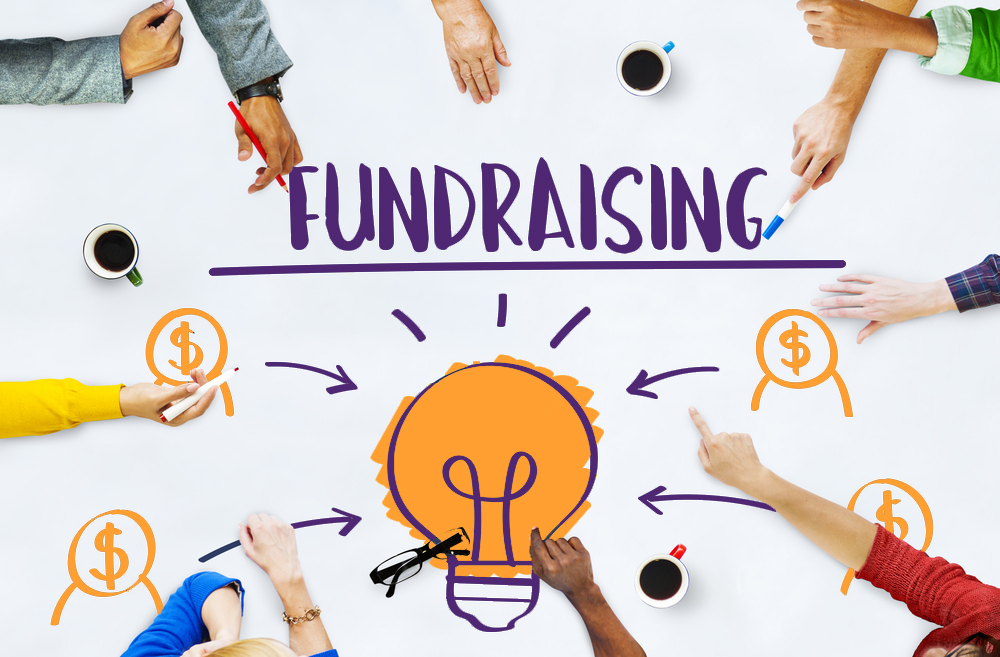Nonprofit Agency: Specialist Providers to Support Your Goal and Goals
Wiki Article
The Duty of Community Engagement in Nonprofit Fundraising: Structure Lasting Relationships for Lasting Support
Neighborhood engagement is significantly acknowledged as an important element of successful nonprofit fundraising. By cultivating real partnerships with neighborhood stakeholders, companies can cultivate trust and commitment, which are vital for lasting support. However, the strategies and approaches employed to engage neighborhoods vary commonly, raising vital concerns concerning effectiveness and effect. What are the very best methods for growing these necessary connections, and exactly how can nonprofits gauge their success in this arena? Recognizing these dynamics might significantly influence the future of fundraising initiatives and the overall goal of nonprofit companies.Understanding Neighborhood Interaction
Neighborhood engagement is a crucial element of effective not-for-profit fundraising efforts. It refers to the techniques and activities that organizations utilize to get in touch with their neighborhood neighborhoods, cultivating partnerships that are mutually useful. Understanding neighborhood involvement includes acknowledging its diverse nature, that includes partnership, outreach, and involvement. Nonprofits need to determine essential stakeholders-- such as community members, neighborhood businesses, and other organizations-- to create effective engagement methods.Effective neighborhood interaction is asserted on energetic listening and responsiveness to the demands and passions of the community. This procedure includes obtaining comments, understanding community characteristics, and making sure that the organization's objective aligns with regional concerns. Engaging the community can take numerous kinds, including public meetings, volunteer chances, and collaboration efforts, each developed to urge involvement and investment in the company's goals.
Furthermore, neighborhood involvement ought to be approached as a continuous discussion rather than an one-time initiative. By cultivating an inclusive setting where area voices are heard and valued, nonprofits can construct a solid foundation for future fundraising undertakings. Ultimately, a deep understanding of neighborhood engagement equips companies to develop genuine connections that enhance their general efficiency and sustainability.
Benefits of Strong Relationships
Strong partnerships formed through neighborhood interaction yield countless advantages for not-for-profit fundraising efforts. Most importantly, these relationships foster depend on and reputation, crucial elements in encouraging contributors to add. When prospective supporters see a nonprofit proactively entailed in their neighborhood, they are more probable to think in its objective and impact.
In addition, these connections facilitate efficient interaction. Nonprofits can take advantage of their connections to share stories of influence, updates, and needs, making certain that advocates continue to be enlightened and engaged. This open line of communication not just reinforces bonds yet also motivates word-of-mouth promotion, expanding the nonprofit's reach.
Lastly, solid area connections can draw in new partners and sponsors. Organizations and individuals are extra likely to align with companies that demonstrate purposeful community involvement, giving additional sources and support that can considerably improve fundraising capacities. Therefore, cultivating robust connections via area interaction is integral to a not-for-profit's lasting fundraising success.
Strategies for Efficient Interaction
How can nonprofits properly involve their areas to boost fundraising initiatives? Normal updates, engaging material, and calls-to-action can galvanize neighborhood passion and engagement.Second, hosting area events, such as workshops, volunteer opportunities, or fundraising drives, assists in in person communication, allowing nonprofits to display their impact and efforts. These occasions not just elevate funds but likewise cultivate connections and enable area participants to involve directly with the cause.
Third, executing personalized communication methods can boost engagement. Tailoring messages to particular contributor sections based on passions and previous contributions promotes a sense of belonging and investment in the organization's goal.
Last but not least, creating partnerships with neighborhood businesses and neighborhood leaders can amplify outreach efforts. Collective initiatives can enhance exposure and integrity, showing a cumulative commitment to the community's well-being. By integrating these techniques, nonprofits can develop enduring connections that improve fundraising initiatives and drive sustainable assistance.
Gauging Interaction Success
While involving the community is vital for successful nonprofit fundraising, determining the efficiency of these involvement efforts is just as important. Developing clear metrics enables organizations to examine exactly how well they are linking with their target market and attaining their fundraising goals. Secret efficiency indications (KPIs) such as donor retention prices, volunteer involvement degrees, and interaction on social media systems offer concrete information for evaluation.
Regularly evaluating these metrics allows organizations to pivot their methods when needed, making sure that community engagement continues to be lined up with their overall objective. Furthermore, sharing these outcomes with stakeholders fosters openness and builds depend on, encouraging additional community participation. Ultimately, a robust dimension framework not just informs future fundraising campaigns but additionally enhances the partnership in between my response the nonprofit and its advocates, laying the groundwork for sustainable success.
Study in Area Impact
Numerous study highlight the profound influence that community interaction can carry nonprofit fundraising success. One significant instance is the "Food for Thought" effort, where a neighborhood food bank partnered with schools and organizations to host area suppers. These events not only increased funds yet additionally fostered a sense of belonging among individuals, significantly enhancing contributor retention prices.An additional compelling situation is the "Environment-friendly Spaces Task," which involved local citizens in the revitalization of city parks. This initiative not only gathered financial backing from local organizations yet also cultivated a volunteer base that added to recurring maintenance and shows. The sense of ownership and pride amongst community participants translated into sustained payments.
In the realm of arts, the "Art for All" campaign successfully engaged regional artists and patrons to create collective art setups, resulting in boosted presence and contributions for a neighborhood arts not-for-profit.
These examples highlight that when nonprofits prioritize area involvement, they can create long-term connections that enhance fundraising initiatives, making sure sustainable support and fostering a vivid area culture. Such cases show that area interaction is not merely a technique but a vital pillar of nonprofit success.
Final Thought
In final thought, area interaction is indispensable to the success of nonprofit fundraising initiatives. Ultimately, a robust foundation of neighborhood assistance not only enhances fundraising prospective yet additionally grows a society of partnership, essential for accomplishing long-lasting organizational goals and sustaining purposeful effect. fundraising consultant.Nonprofits should identify crucial stakeholders-- such as area participants, neighborhood businesses, and various other organizations-- to develop effective interaction approaches.

In conclusion, neighborhood engagement is important to the success of not-for-profit fundraising initiatives.
Report this wiki page